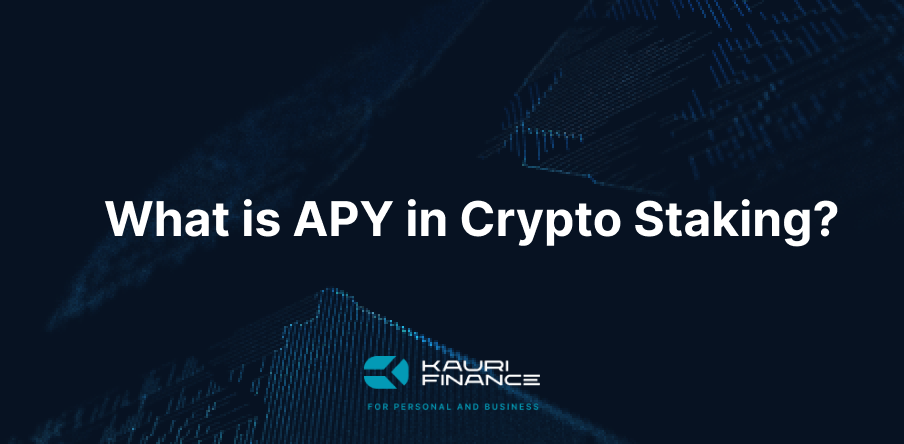
What is APY in Crypto Staking?
- Understanding APY in Cryptocurrency
- How APY Works in Crypto Staking
- Benefits of High APY in Crypto Staking
- Risks Associated with APY in Crypto Staking
- Comparing APY Across Different Cryptocurrencies
- Strategies for Maximizing APY in Crypto Staking
- Frequently Asked Questions About APY in Crypto Staking
- What is the difference between APY and APR in crypto staking?
- How often is APY calculated in crypto staking?
- Can APY rates change in crypto staking?
- Is a higher APY always better in crypto staking?
- How does APY in crypto staking compare to traditional savings accounts?

Understanding APY in Cryptocurrency
Annual Percentage Yield (APY) in cryptocurrency staking marks a revolutionary shift in wealth accumulation. Leveraging blockchain technology, crypto APY offers potentially higher returns than traditional finance. This metric encompasses both interest rate and compounding effect, providing a comprehensive view of potential earnings. In the volatile crypto world, APY guides investors towards opportunities to maximize idle holdings. However, it's crucial to recognize that crypto APY operates in a unique ecosystem with amplified risks and rewards. The decentralized nature of cryptocurrencies enables innovative staking mechanisms, often resulting in APY figures that significantly outpace conventional banks.
Now that we understand what APY is, let's explore how it specifically works in the realm of crypto staking.
How APY Works in Crypto Staking
In crypto staking, APY acts as a financial catalyst, transforming idle digital assets into growth engines. Unlike traditional interest, staking APY leverages blockchain protocols to reward network security participants. By locking cryptocurrency in a designated wallet, users become virtual validators.
Several dynamic factors influence crypto staking APY:
-
Network participation rate: Higher staking volumes may decrease individual rewards
-
Protocol-specific algorithms: Each blockchain's unique reward distribution method
-
Market volatility: Crypto price fluctuations impact APY's fiat value
-
Validator performance: Uptime and accuracy affect earned rewards
-
Governance decisions: Community votes can alter reward structures
Crypto staking APY often compounds automatically, potentially outpacing traditional yield-bearing assets. However, this ecosystem demands vigilance, as rates can shift rapidly, reflecting evolving blockchain technology and market dynamics.
With a clear understanding of how APY works in crypto staking, let's explore the benefits that high APY rates can offer to investors.
Benefits of High APY in Crypto Staking
High APY rates in crypto staking offer a compelling opportunity for investors to maximize their digital asset potential. By participating in network validation, stakers can unlock substantial passive income streams while bolstering blockchain security. This symbiotic relationship rewards long-term holders and strengthens the ecosystem.
"Crypto staking APY represents a paradigm shift in wealth accumulation, actively shaping decentralized finance while your assets work for you," notes blockchain expert Dr. Samantha Chen.
High APY staking serves as a hedge against market volatility, providing steady income during bearish periods. This dual benefit of potential asset appreciation and consistent yields makes it an attractive portfolio diversification strategy in the digital age.
Risks Associated with APY in Crypto Staking
High APY in crypto staking comes with significant risks. Market volatility can erode staked asset values, potentially negating yield gains. Smart contract vulnerabilities and regulatory shifts pose substantial threats. Lengthy lock-up periods may expose investors during downturns, while decentralized platforms introduce counterparty risks. Validator performance directly impacts rewards, making network stability crucial. Impermanent loss in liquidity pools can erode gains, especially in volatile markets. Beware of unsustainably high APY offers, often indicative of high-risk schemes. As Ethereum expert Dr. Chen warns, "Due diligence is paramount in navigating the crypto staking landscape."
With risks in mind, let's compare APY rates across different cryptocurrencies to get a broader perspective on the staking landscape.
Comparing APY Across Different Cryptocurrencies
In the dynamic realm of crypto staking, APY rates fluctuate significantly across cryptocurrencies, offering diverse opportunities for savvy investors. Let's compare popular staking options, revealing potential returns and unique features:
|
Cryptocurrency |
APY Range |
Unique Feature |
|
Ethereum 2.0 |
4% - 7% |
Proof-of-Stake transition |
|
Cardano (ADA) |
5% - 8% |
Liquid staking pools |
|
Polkadot (DOT) |
10% - 14% |
Nominated Proof-of-Stake |
|
Cosmos (ATOM) |
8% - 12% |
Interchain security |
|
Tezos (XTZ) |
5% - 6% |
On-chain governance |
These rates reflect current market conditions but can fluctuate based on network participation and protocol changes. Ethereum's shift to PoS has reshaped its staking landscape, while Cardano's liquid staking offers flexibility. Polkadot's higher rates come with increased complexity, and Cosmos leverages its interchain approach for competitive yields.
Now that we've compared APY rates, let's explore strategies for maximizing your returns in crypto staking.
Strategies for Maximizing APY in Crypto Staking
To maximize crypto staking APY, diversify across protocols, leveraging their strengths. Monitor participation rates and adjust strategies accordingly. Explore liquid staking for flexibility and engage in governance to influence rewards. Automate compounding through smart contracts and stay market-vigilant, rebalancing as needed. This dynamic approach optimizes risk-adjusted returns in the ever-evolving staking landscape.
Armed with these strategies, you're well-equipped to navigate the world of crypto staking. Let's address some common questions to further clarify the concept of APY in crypto staking.
Frequently Asked Questions About APY in Crypto Staking
What is the difference between APY and APR in crypto staking?
APY in crypto staking reflects total annual returns, including compound interest. Unlike APR's simple interest, APY offers a comprehensive view of potential gains. Understanding this distinction is crucial for informed staking decisions in the dynamic crypto landscape. Let's explore APY calculation frequency in crypto staking.
How often is APY calculated in crypto staking?
APY calculation frequency in crypto staking varies by protocol. Some networks update yields daily, others hourly or in real-time. Ethereum 2.0 distributes rewards every 6.4 minutes. This dynamic approach ensures timely, accurate returns reflecting network conditions.
Let's explore APY rate stability in crypto staking.
Can APY rates change in crypto staking?
Crypto staking APY rates fluctuate with network participation, market dynamics, and protocol changes. Ethereum's Proof-of-Stake transition exemplifies this volatility. Investors must stay alert, as today's high APY could plummet tomorrow, demanding flexible strategies in this evolving landscape.
Is a higher APY always better in crypto staking?
Higher APY in crypto staking isn't always superior. While enticing, it often signals increased risk. Factors like network stability, token inflation, and market volatility can undermine high yields. Savvy investors prioritize sustainable rates from established protocols, balancing potential returns with long-term viability, security considerations, and market dynamics.
How does APY in crypto staking compare to traditional savings accounts?
Crypto staking APY dwarfs traditional savings, offering potential yields of 5-20% versus 0.1-1%. However, this comes with heightened volatility and risk. Unlike FDIC-insured accounts, crypto staking lacks guaranteed protection. The decentralized nature promises greater returns but demands vigilant market monitoring and risk management strategies.
